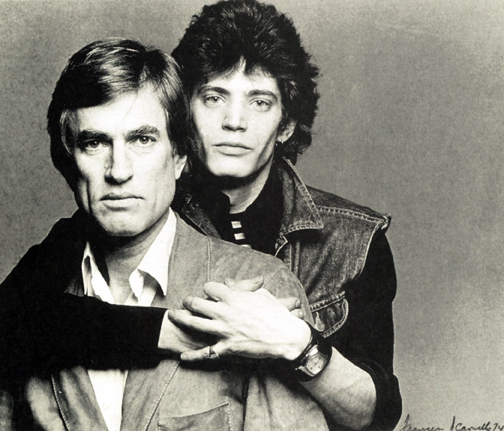

Reviews of Recent Independent, Foreign, & Documentary Films in Theaters and DVD/Home Video
Written, Produced & Directed by James Crump. Director of Photography Christopher Felver, Harry Geller, Paul Lundahl & Eric Koziol . Edited by Dave Giles & William Davis. Music by J. Ralph. Released by Arts Alliance America. USA. 72 min. Not Rated. DVD Features: A (rather dry) 18-minute videotaped presentation by Sam Wagstaff at the Corcoran Museum in 1978. Sam Wagstaff comes out from under the long shadow of photographer and lover Robert Mapplethorpe (somewhat at the latter’s expense). The documentary/tribute is named after art curator Wagstaff’s landmark 1965 exhibition of Minimalism, the first of its kind in America, at Hartford’s Wadsworth Athenaeum. Formerly in the U.S. Navy during WWII, the tall, blond, and handsome Yalie was the ’50s version of the walker, the go-to man for New York debutantes, and worked on Madison Avenue hawking toothpaste before going back to school to study art history. Post-Stonewall, he abandoned Brooks Brothers for the leather scene and would become a downtown fixture (Warhol, Max’s Kansas City, and Scavullo briefly pop up, though the film itself is staid in comparison to the descriptions of the ’70s high life and the fetish scene). A Central Park South blue blood, Wagstaff used his inherited wealth to amass a huge photography collection, much of it scavenged from flea markets, and in the process he practically jump-started the photography market. Photos from his collection, now owned by the J. Paul Getty Museum, are the film’s real stars, memorable and haunting 19th-century works ranging from unknown photographers to Thomas Eakins and Julia Margaret Cameron. The crux of James Crump’s somber and reverent film is Wagstaff’s role as the mentor of Mapplethorpe, who he nicknamed his “shy pornographer.” When they met in the early ’70s, Wagstaff was 51 to Mapplethorpe’s 26. The first half is as much about downtown New York as it is the singular threesome of Wagstaff, Mapplethorpe, and the younger half’s roommate, poet and rocker Patti Smith, all three rising in their own endeavors roughly at the same time. The narration by writer Joan Juliet Buck, tying together the disparate chapters of Wagstaff’s life, editorializes a bit. Certainly Wagstaff’s reputation has been upstaged by Mapplethorpe’s fame, but he hasn’t been altogether “totally forgotten.” Hilton Als profiled Wagstaff in The New Yorker nearly 10 years ago, around the time of “The Eye of Sam Wagstaff” exhibit at the Getty.
Regardless, the chatter among Wagstaff’s colleagues and friends is frank, free, and a bit vicious, particularly that of art historian Eugenia Parry
(who describes Wagstaff as a “cash cow” for the working-class Mapplethorpe), though there’s not a harsh word from the relaxed Smith. The film
succinctly capsulizes the whirlwind changes both culturally and in the art scene during the last 50 years, although insight into the couple’s last
years is conspicuously missing.
Kent Turner
|